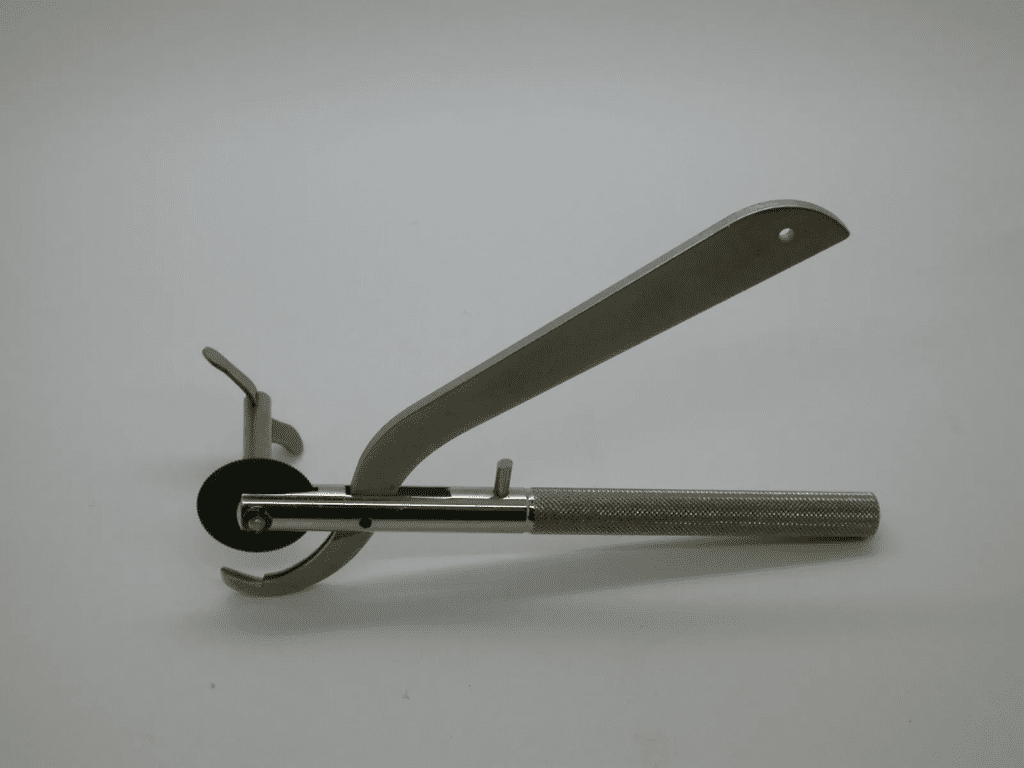Classic equipment that made managing our work more efficient.
The art of jewelry making has always been a blend of creativity, precision, and tradition. Among the many tools that have shaped this craft, the vintage ring cutter stands out as a symbol of both practicality and artistry. Developed in the late 19th and early 20th centuries, this tool played a crucial role in the resizing, repair, and preservation of rings. As we delve into the history, usage, and legacy of the vintage ring cutter, we uncover its enduring significance in the world of jewelry.
A Glimpse into History: The Birth of the Vintage Ring Cutter

The vintage ring cutter’s history is deeply intertwined with the evolution of jewelry-making techniques. In the late 1800s and early 1900s, as jewelry design became more intricate and personalized, the need for tools that could assist in resizing and repairing rings grew. The early models of ring cutters were manually operated, crafted with meticulous attention to detail. These tools featured intricate designs and robust construction, allowing jewelers to cut through metal bands with precision and care.
Initially, ring cutters were simple yet effective, resembling scissor-like mechanisms that required manual effort. However, as technology advanced, so did the design of these tools. By the mid-20th century, ring cutters began to incorporate rotary blades and adjustable settings, making them more versatile and user-friendly. Despite these advancements, the fundamental purpose of the ring cutter remained the same: to provide jewelers with a reliable tool for handling the delicate task of resizing and repairing rings.
Practical Usage: How Jewelers Utilized the Vintage Ring Cutter
Vintage ring cutters were indispensable in a jeweler’s toolkit, primarily serving three essential functions: resizing rings, removing stuck bands, and repairing damaged rings. These tasks required a tool that could make clean, precise cuts without compromising the integrity of the metal or any embedded gemstones.
Ring Resizing: One of the most common uses of the vintage ring cutter was for resizing rings. Whether a ring needed to be made smaller or larger, the cutter allowed jewelers to adjust the size by either removing excess material or adding pieces to the band. The precision of these cuts was crucial in ensuring that the ring maintained its structural integrity and aesthetic appeal.
Ring Removal: In cases where rings became stuck due to swelling, injury, or damage, the ring cutter provided a safe solution for removal. This was particularly important in emergency situations where the wearer’s finger might be at risk. The tool’s design ensured that the ring could be cut away without causing injury to the wearer or significant damage to the ring itself.
Repairs: Over time, rings can become worn or damaged, requiring repair. Vintage ring cutters allowed jewelers to make necessary cuts and adjustments to restore the ring to its original condition. Whether it was reshaping the metal or reinforcing weak spots, the cutter played a vital role in the repair process.
The design of these cutters varied, with some featuring adjustable settings to accommodate different ring sizes and metal thicknesses. This adaptability made the vintage ring cutter a versatile tool, capable of handling a wide range of jewelry tasks.

The Enduring Legacy of the Vintage Ring Cutter
The legacy of the vintage ring cutter is a testament to its lasting impact on the field of jewelry craftsmanship. While modern technology has introduced new tools and techniques, the vintage ring cutter remains a cherished symbol of skilled craftsmanship and attention to detail. For collectors, these tools are not just functional items but pieces of history that represent an era when manual skill was paramount.
Symbol of Craftsmanship: The vintage ring cutter embodies the artistry and precision that were hallmarks of traditional jewelry making. Artisans who value these qualities continue to use vintage ring cutters in their work, appreciating the connection to past generations of craftsmen. These tools remind us of a time when every cut, every adjustment was made with care and expertise.
Collector’s Item: Beyond their practical use, vintage ring cutters are now highly sought after by collectors and enthusiasts. Their historical significance, combined with their unique designs, makes them valuable antiques. Collectors prize these tools not only for their rarity but also for the craftsmanship that went into making them. Each ring cutter tells a story of the jeweler who used it and the countless pieces of jewelry that passed through their hands.

Inspiration for Modern Craftsmanship: The vintage ring cutter continues to inspire modern jewelers and designers. Its elegant design and functionality serve as a reminder of the importance of precision and care in crafting beautiful, lasting pieces of jewelry. In a world where mass production often overshadows traditional techniques, the vintage ring cutter stands as a beacon of the artistry that defines true craftsmanship.

The vintage ring cutter is more than just a tool; it is a symbol of a rich history in jewelry making that has been passed down through generations. Its role in resizing, repairing, and preserving rings has made it an indispensable part of a jeweler’s craft. Today, as both a functional tool and a collectible item, the vintage ring cutter continues to hold a special place in the hearts of those who appreciate the artistry and tradition of jewelry making. Its legacy endures, reminding us of the timeless beauty and precision that define the art of crafting fine jewelry.



